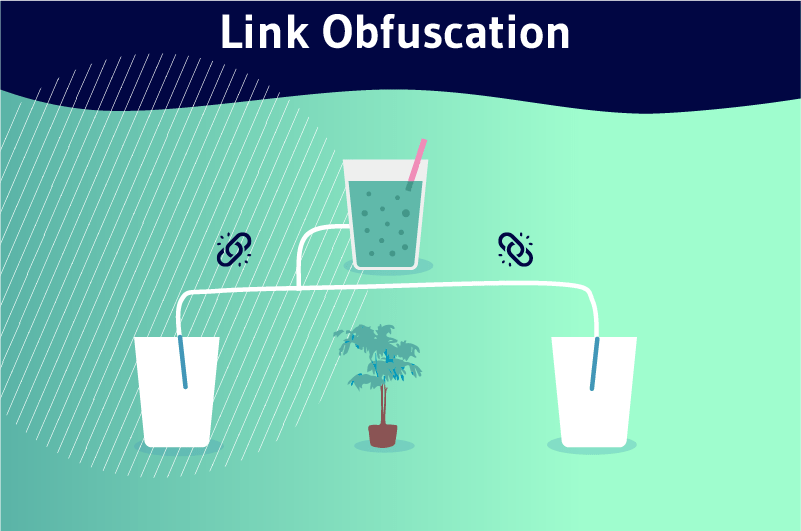Link obfuscation is a technique that consists of hiding certain links that point to pages of questionable quality from search engines. The links are obfuscated in the website tree and become invisible to search engine spiders. However, link obfuscation does not interfere with navigation.
The user will still be able to click on the links and access the contents of the page. Please note that link obfuscation is very different from the Cloaking technique which is purely Black hat SEO. Link obfuscation consists in optimizing the visibility of the site by improving its internal mesh.
The presence of some pages with no SEO value on a site compromises the SEO work of the latter
However, some SEO practices like Nofollow and Noindex are not very suitable to prevent search engines from accessing these pages. In addition, using these methods can result in the loss of link juice.
To make low-quality pages invisible to the indexing robots, some SEOs use the link obfuscation method
But explicitly,
What is the link obfuscation method?
Is this method legal for pages of questionable quality?
Find in this article the answer to all these questions as well as how you can obfuscate links in the tree of your site.
Chapter 1: What is link obfuscation?
Link obfuscation is a PageRank Sculpting technique whose goal is to prevent the access of certain pages to search engines like Google and Bing
Before we get into the nitty-gritty, I’d like to make sure we’re on the same level of understanding.
1.1) What is PageRank?
Originally, PageRank is an algorithm used by Google to evaluate the popularity of links pointing to sites or web pages
The PageRank is the algorithm that allows Google to analyze the popularity and awareness of websites to sites.
To evaluate the sites, this algorithm takes into account several factors such as the number of links pointing to the web page. The more inbound links your site receives, the more it will be rated. But the PR (PageRank) does not only consider the number of links that point to a site, it also evaluates the quality of these links.
Indeed, the algorithm studies the authority of the different sites that talk about your site using outbound links
Basically, the PR score of your site is a mathematical value between 0 and 1 and is likely to increase as other sites are interested in your site by creating links to your content.
There are many tools on the web to calculate the PageRank index of your site. If you want to know approximately the PR score that Google gives to your site, you can use Google Bar, which is one of the most famous tools.
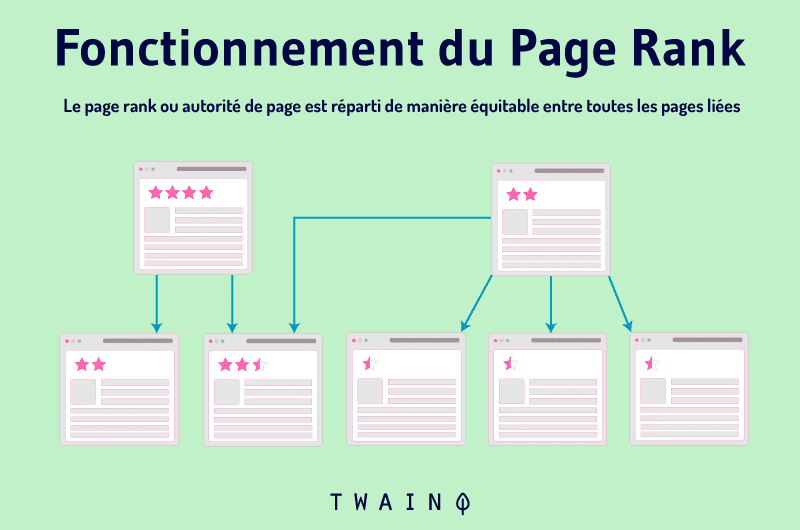
Webmasters and SEOs who are familiar with how the PageRank algorithm works can easily optimize their sites for Google’s algorithm
They basically just :
- Generate quality links from to their site: web SEOs used the famous netlinking technique to increase the popularity and authority of their site. They create links from very powerful sites whose theme coincides with theirs;
- Optimize the internal linkage of their site with the PageRank Sculpting technique to considerably limit the loss of SEO link juice.
Traditional methods such as the famous Nofollow were used to promote PageRank Sculpting until 2009
But from 2009, all SEOs had to abandon this technique or else see their site fall in the search results pages.
Indeed, Google announced the counting of Nofollow links in the calculation of PageRank without attributing them the SEO link juice.
It is therefore at this time that the method of link obfuscation in JavaScript officially comes into play. But it is important to note that some people are already using it.
1.2 What does PageRank Sculpting mean?
PageRank Sculpting is an SEO strategy that consists in sculpting the pageRank of a website. We use the term sculpted in this sense to mean the optimization of the flow of PageRank in the tree of the website.
SEOs use this technique to deprive some pages (which do not need popularity) of link juice. In return, the link juice will be channeled to the most important pages of the website.
Basically, the PageRank Sculpting technique allows web SEOs to guide search engines as to which pages to crawl
To implement PageRank, SEO experts use the Nofollow attribute, but this method causes the loss of link juice.
It is precisely at this level that the method of link obfuscation is useful. It allows to show to the search engines’ crawlers the well optimized pages
The implementation of link obfuscation is possible thanks to the organization of the site’s internal links (internal mesh).
1.3) How is link obfuscation useful in SEO?
Link obfuscation is a technique that allows to optimize the SEO of a website and improve its positioning in search results
Hiding certain pages allows SEOs to increase the authority of the site by positioning new pages.
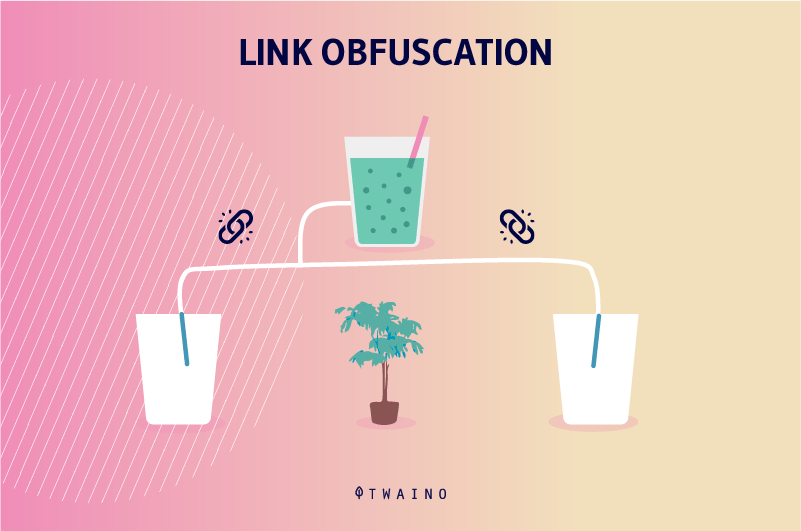
In fact, you can use link obfuscation to hide the links of some pages already positioned. This allows crawlers to concentrate the crawl budget on the pages and index them if they meet Google’s requirements of course.
Link obfuscation is therefore a better solution to manage the crawl budget. It should be noted that the use of the crawl budget usually depends on several criteria such as the total number of pages.
1.4. How the link obfuscation method works
Link obfuscation is the fashionable method to prevent Google’s crawlers from indexing links that point to poorly optimized pages or that redirect to other sites.
Let’s face it, Google’s many algorithm updates help improve the search engine. Google is developing its ability to read the various links created on the indexed sites.
However, it is still possible to hide links and block access to Google’s crawlers by obfuscating links with JavaScript. Certainly, the technique of link obfuscation has become viral following the destabilization of Nofollow. But note that some SEOs have been practicing this technique for years to achieve certain SEO objectives such as :
- The optimization of the internal linkage of the site ;
- The masking of pages of questionable SEO quality;
- Optimal sharing of SEO link juice;
- Setting up a silo structure;
- Optimizing the crawl budget.
1.4.1. Optimization of the site’s internal mesh
For a real SEO work, the optimization of the internal mesh is very important for all websites. This is one of the main objectives of SEOs who use the technique of link obfuscation.
It allows to improve the structure or the tree structure of the website to make the navigation more fluid to the visitors. It also facilitates exploration by Google’s crawlers.
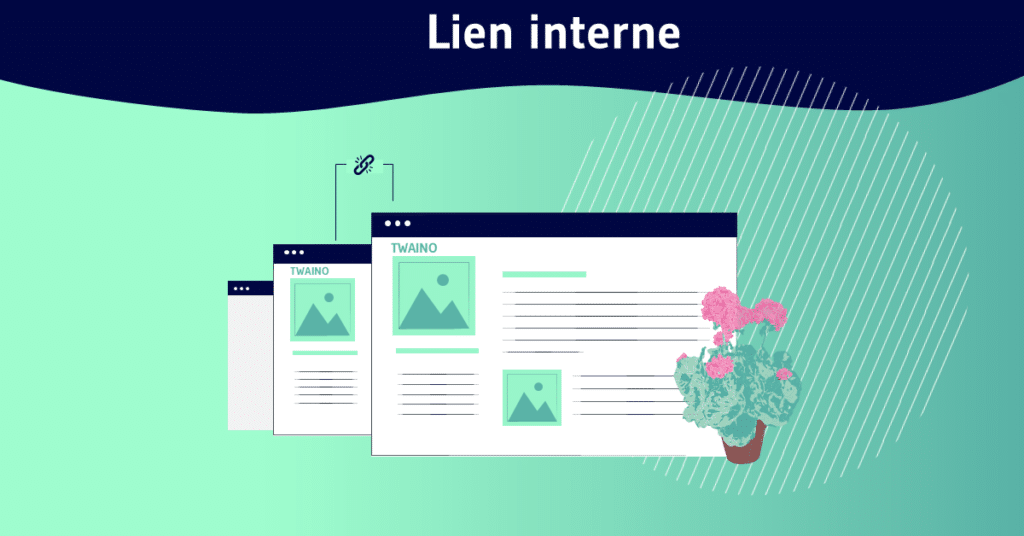
Link obfuscation allows you to optimize the tree structure of your site by creating large menus with lower levels
It allows you to arrange the internal mesh and contrary to stereotypes, link obfuscation does not have any negative impact on the internal mesh
Instead, it allows for a semantic silo architecture on the site. This gives visitors the possibility to navigate from one semantic universe to another on the same site.
1.4.2. Hiding pages of questionable SEO quality
Whether you have a showcase site or a store site, the link obfuscation technique is the best method to hide links pointing to low quality pages
Let’s take for example the links placed in the footer or in the header of websites. Generally, we find page links like :
- Privacy policy and use of cookies ;
- Login ;
- About us ;
- Contact form;
- Legal information, etc.
These links have no real SEO value. However, you must create them on your site to respect the regulations in force and also because of necessity (e.g.: contact form).
1.4.3. The optimal sharing of SEO link juice
The SEO link juice that comes from backlinks will be shared according to the different pages indexed by search engine robots
The SEO link juice essentially allows to optimize the natural referencing of the site for a good ranking.
With the link obfuscation method, the link juice will be distributed only to the most important pages (eliminating unnecessary links and links pointing to super SEO optimized pages). Link obfuscation thus allows to extend the notoriety and credibility of the website.
1.4.4 Setting up a silo structure
The creation of a silo architecture is one of the many uses of the link obfuscation method. By setting up a siloed tree structure, you create solid semantic universes around your theme while optimizing the navigation level.
You can hide some links to facilitate navigation within the silos and also the passage from one semantic universe to another for the search engines
However, the links you hide will always remain visible to human users.
Siloed architecture is one of the best SEO trends today. It is an indispensable technique for SEO of sites with a large number of page categories.
It is a factor that contributes to increasing the visibility of your site on the web.
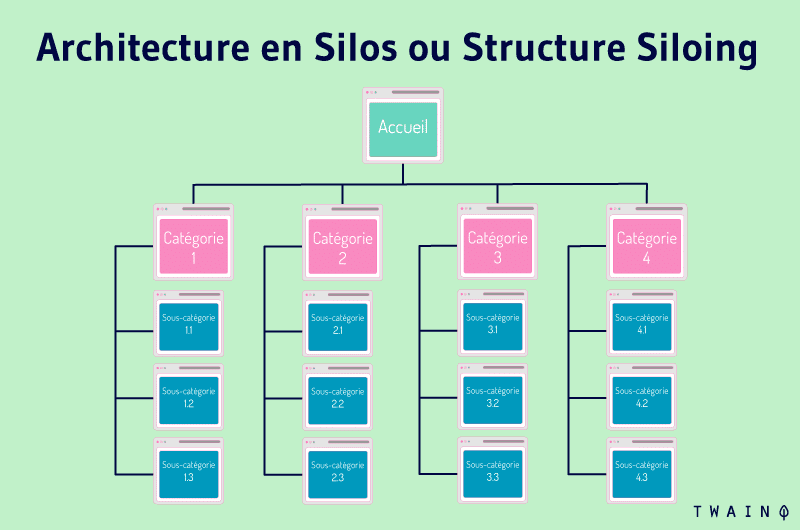
To set up a silo architecture, you will have to compartmentalize the pages of your site by taking into account the semantic aspect. This structure allows you to display to Google an optimal site structure.
Moreover, it allows you to distribute the SEO link juice on the most important pages
The link obfuscation intervenes in the implementation of the silo structure to allow the creation of enigmatic, abstract semantic universes, but while preserving the user experience.
1.4.5. Optimizing the crawl budget
If you have a large number of pages to index on your site, then you must look for ways to better save the crawl budget
Indeed, the large number of pages on your site can cause the crawlers to use more resources during the indexing while the crawlers can only explore a certain number of pages on a site.
The crawl budget is the number of URLs that crawlers can crawl on your site in order to index the pages.
The more pages you have, the less crawlers will be able to scan all your URLs
This will negatively impact the visibility of the site as some pages will not have the chance to be crawled and indexed.
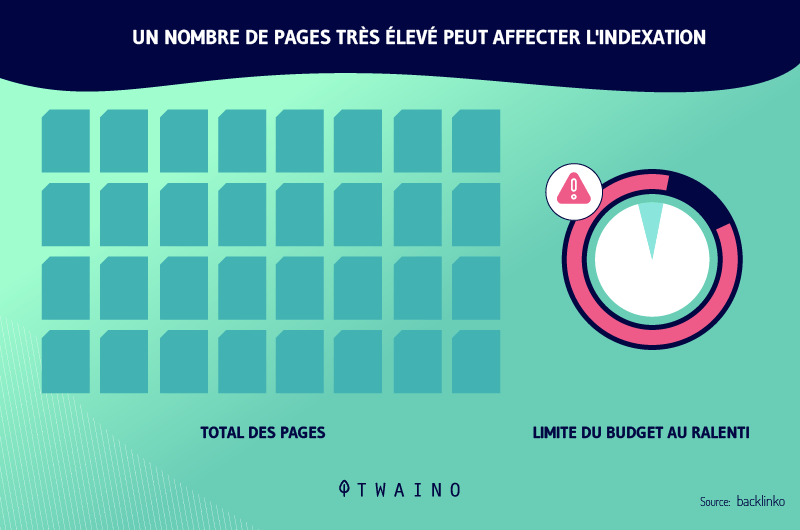
To save the crawl budget, you need to optimize the loading time of the site’s pages on one hand and redirect the crawlers on the other hand to the pages that deserve to be indexed
In this case, link obfuscation allows you to hide certain URLs of pages qualified as “less important” and to give access only to the most important pages.
It should be noted that a website that saves the crawl budget gains the trust of Google and is likely to rise in the search results.
1.4.5. Is link obfuscation a white hat or black hat practice?
Unlike Black Hat techniques such as cloaking, link obfuscation helps to direct search engine robots to index only relevant pages.
It is a technique that consists in hiding page links from Google to save crawl budget. Nevertheless, these links remain accessible to users.
This technique makes it easier for Google bots to search by directing them to the appropriate website pages. Google does not find any danger in using the link obfuscation technique as it does not deceive or mislead users and spiders
However, some SEOs still have reservations about the use of link obfuscation. They prefer to optimize the tree structure of their site.
Chapter 2: How to obfuscate links on a website?
In SEO, there are several ways to block the access of certain sub-optimized SEO pages to search engine crawlers
One of these methods can be the pure and simple deletion of useless URLs. However, this method has its drawbacks especially on the user experience
So here is how you can prevent certain web pages of your site from being accessed by crawlers.
2.1. Building links in JavaScript
JavaScript link building is the method of redirecting the visitor to other pages of the site. But, this method of redirection does not use the a…/a tag.
To obfuscate your links in JavaScript and prevent crawlers from accessing them, you can encode your URLs in the form of a base64 button
The other possibility is to create your links with the Ajax method. The lines of code of these two strategies are very complex and Google’s algorithms are not always able to analyze them.
2.2. The use of HTML “BUTTON” code
You can create some of your URLs using HTML code. First, it is important to understand that search engines do not consider HTML code as a link to be crawled.
Therefore, you can hide the URLs of the less important pages of your site by using the HTML code. You can write them directly in the form…/form tag or in the body…/body tag

Similarly, the URLs you want to hide can also be added as onclick events in the input tags
But, the purpose of link obfuscation is not to hide page access from human users. So, after using the above mentioned tags, you can format the links with CSS to display them to the users.
2.3. Using the OBF LINK extension
If you use a CMS (Content Management System) like WordPress, then the OBF Link extension will be used to obfuscate the links on your site.
This extension allows you to set up the link obfuscation method on your site and hide many elements namely:
- Links from web pages of questionable SEO quality;
- Links from articles of low quality;
- Links in menus;
- Links from categories of articles and products, etc.
This plug-in also gives you the possibility to hide images, buttons and even pictograms. The advantage of OBF Link extension is that you don’t need any coding skills to make your website’s internal linkage optimal
Summary
Link obfuscation is a natural referencing technique whose goal is to prevent the access of certain less qualitative pages to Google’s robots
It allows you to optimize several elements of the site such as sharing the SEO link juice, improving the internal linkage, setting up a silo architecture, and so on.
Although it is confused with some Black Hat SEO practices such as Cloaking, link obfuscation remains a purely White Hat SEO technique.
Did you find this article useful? Do you know other methods of link obfuscation on a website? Feel free to share your ideas with me in comments.

